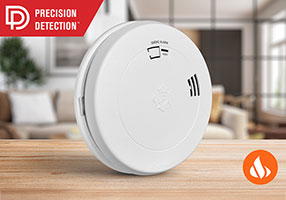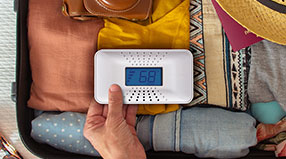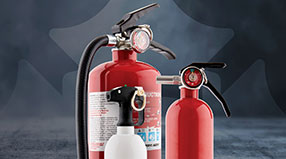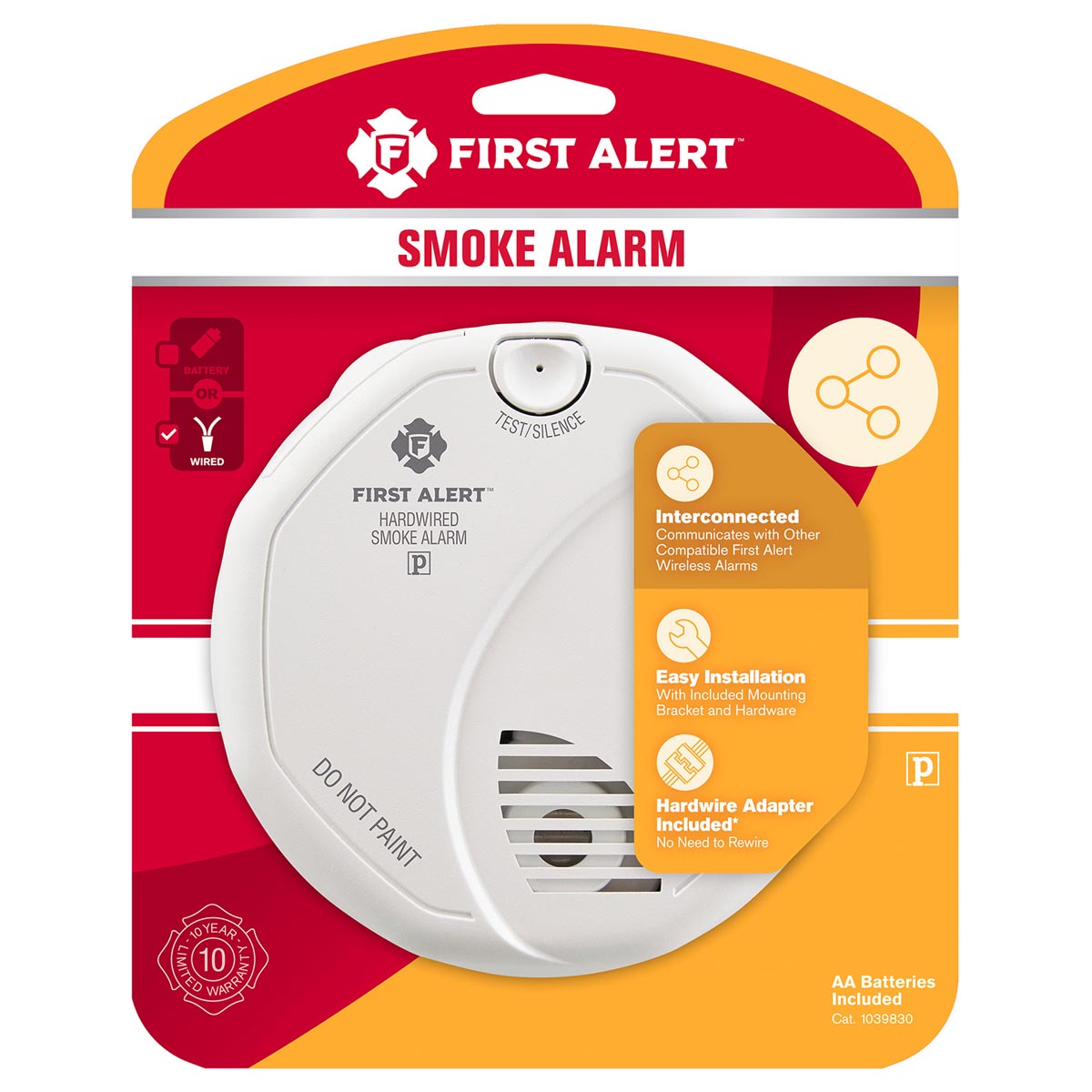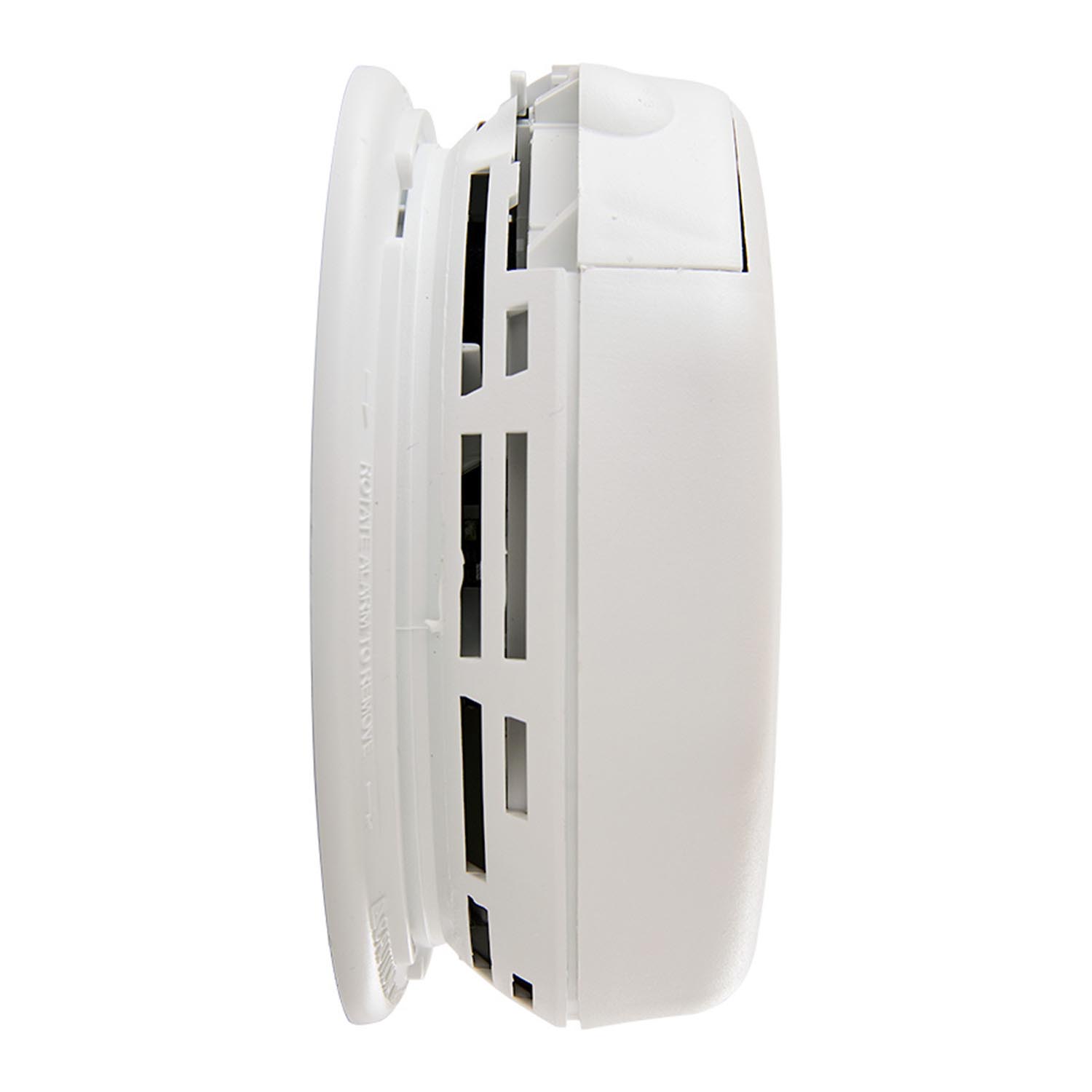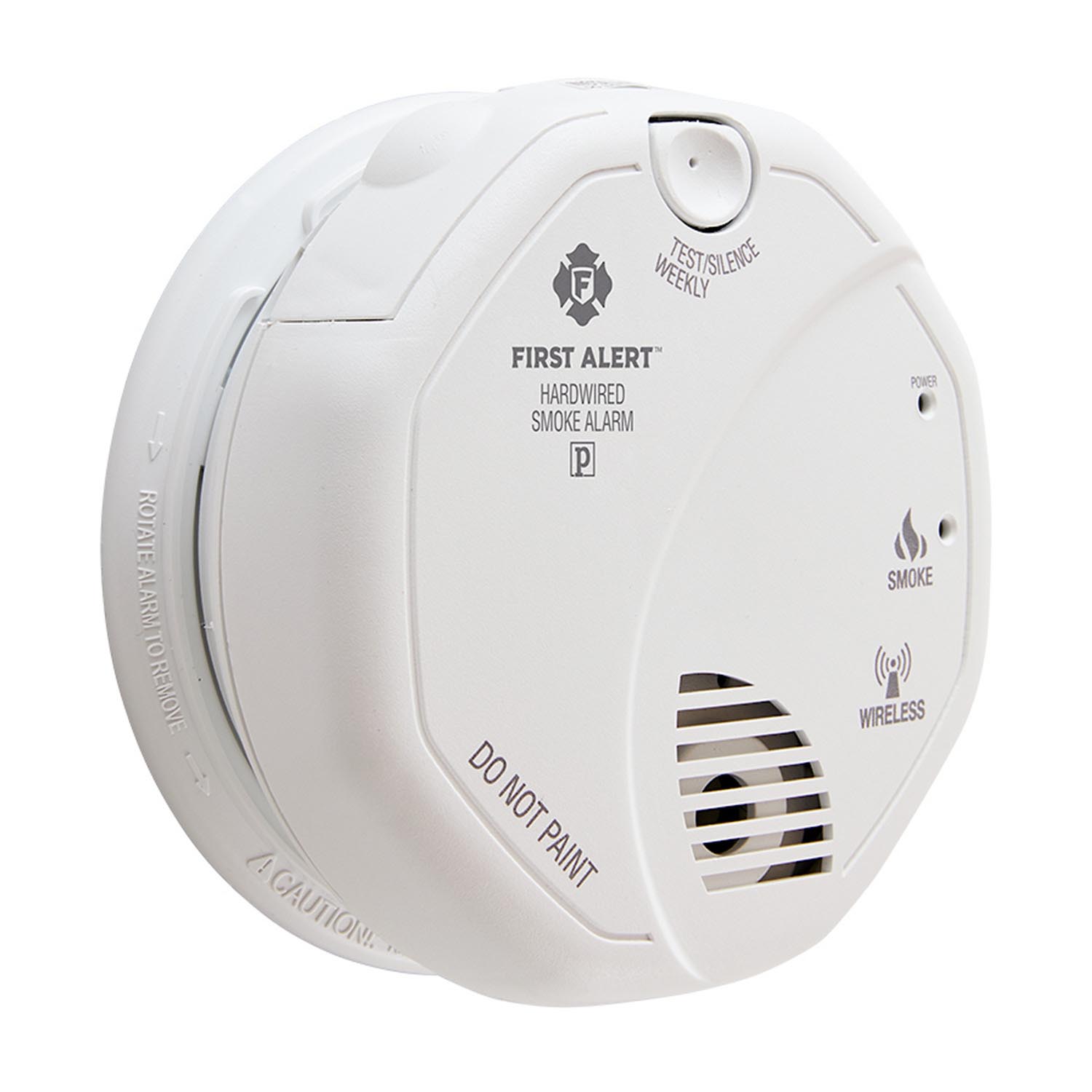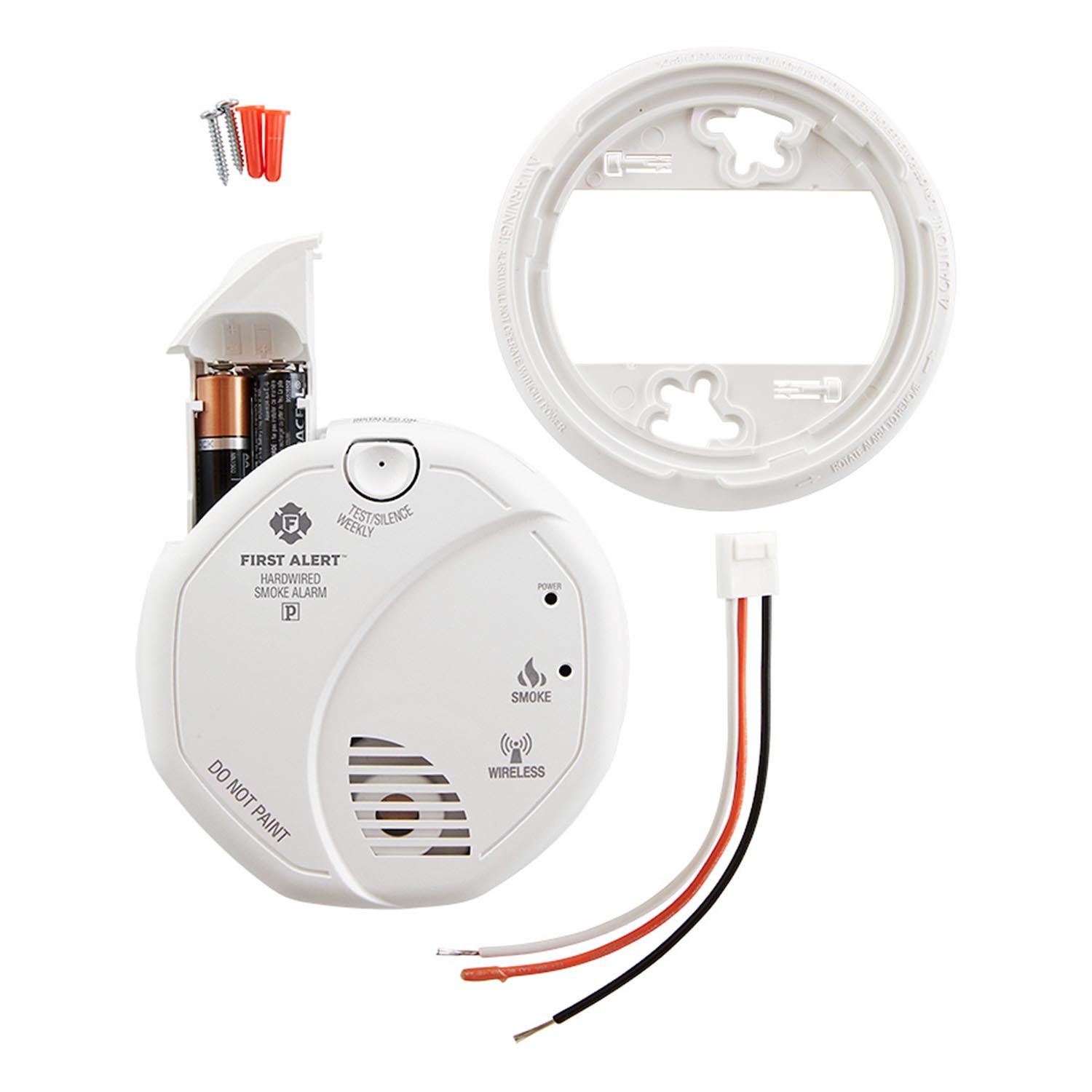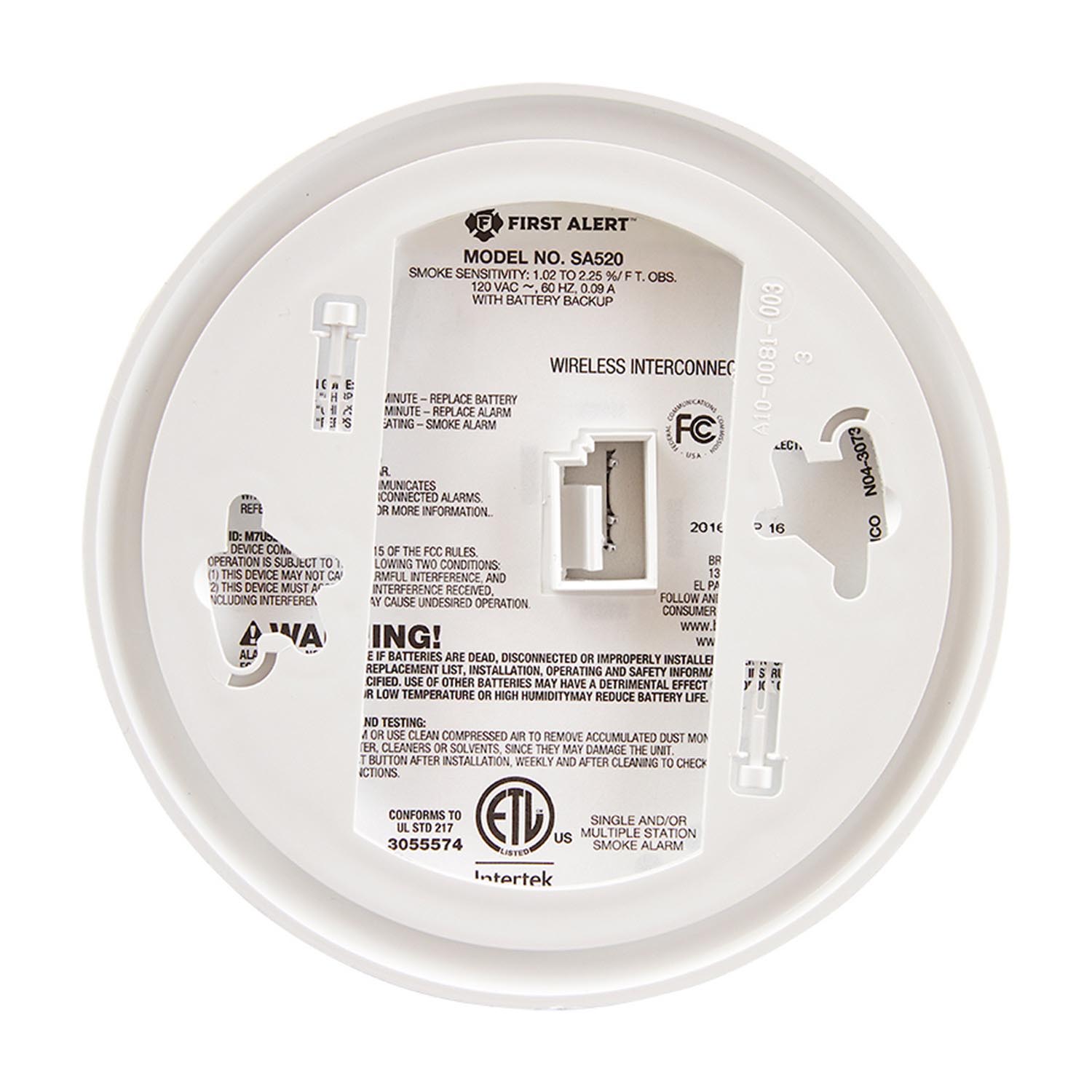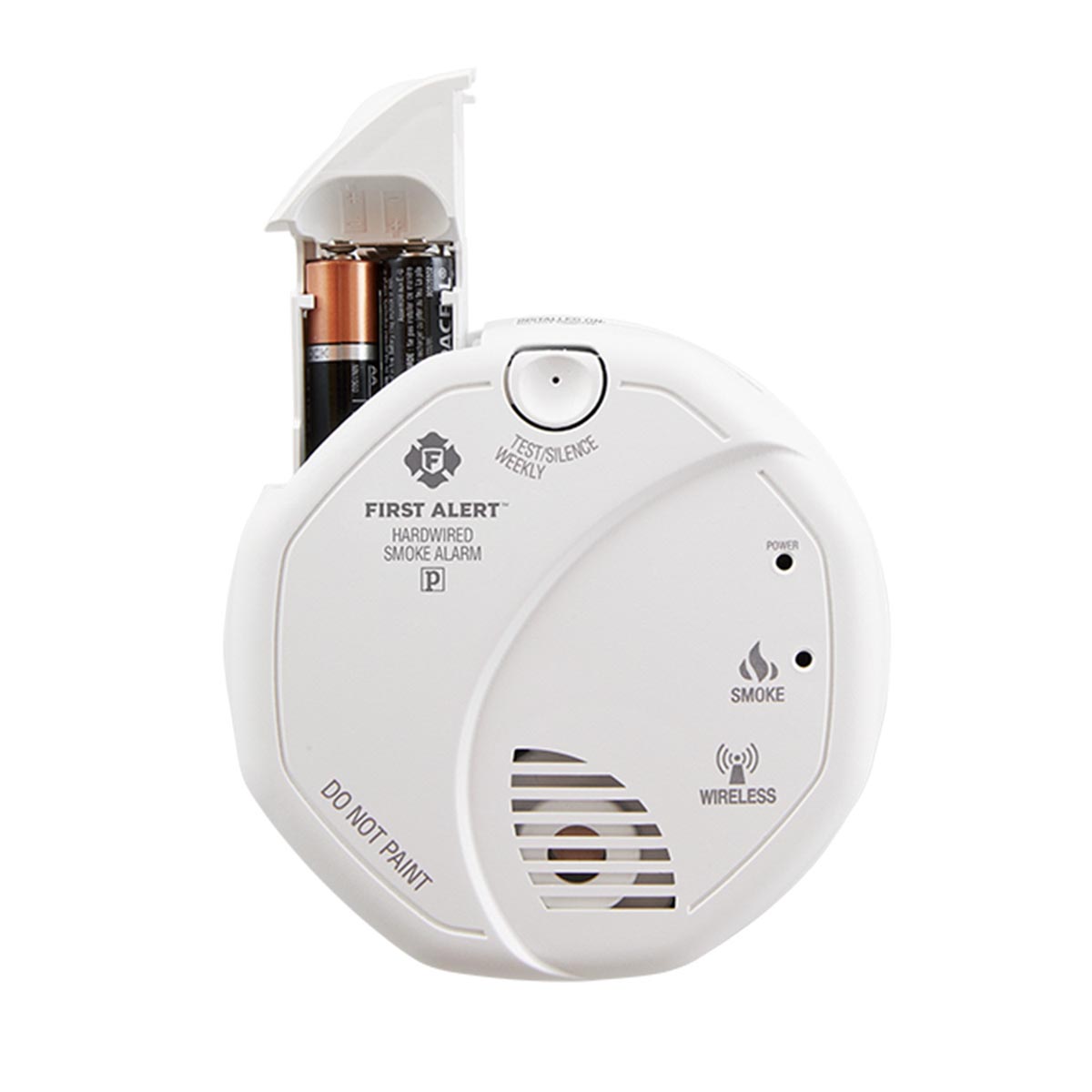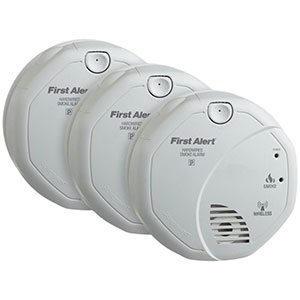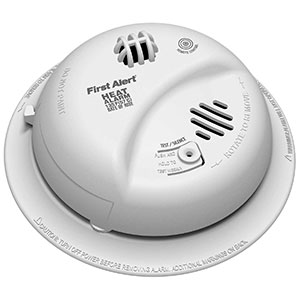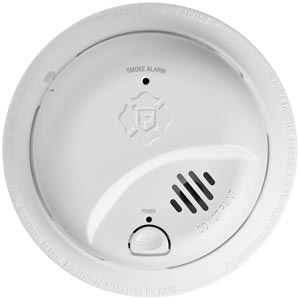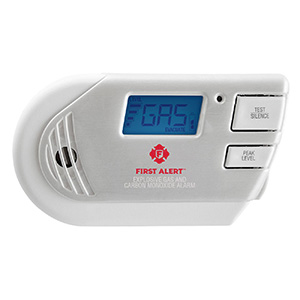First Alert Wireless Interconnect Hardwired Smoke Alarm - SA521CN-3ST (1039830)
Wireless Interconnect Hardwired Smoke Alarm
The First Alert SA521CN-3ST Interconnected Smoke Alarm allows owners to create an interconnected fire alarm system without the cost and hassle of wiring. Use this smoke detector to replace an existing hardwired smoke alarm and then install additional First Alert Wireless alarms for an interconnected safety network (additional alarms sold separately). This hardwired smoke detector can connect and communicate with up to 18 compatible alarms, so when one alarm is triggered, the entire system reacts. An integrated battery backup ensures the smoke alarm continues to work even during power outages.
Photoelectric Sensor Warns of Smoldering Fires
The First Alert Wireless Interconnect Smoke Alarm comes equipped with a photoelectric sensor to provide the earliest possible warning of fire. The sensor is optimized to detect larger smoke particles produced by smoldering fires, such as those caused by unextinguished cigarettes. It also distinguishes between real threats and smoke/vapor produced during showering, cooking, and other everyday activities, helping minimize the number of false alarms. A patented smoke entry system helps ensures reliable detection by providing a direct air pathway to the sensor.
Interconnectivity for Larger Areas
The hardwired smoke alarm can be connected to other compatible BRK and First Alert hardwired alarms for larger buildings such as dormitories, office buildings, and apartments. Connect up to 18 compatible devices: up to 12 smoke alarms and 6 compatible devices like horns and repeaters. The communication distance (range) between any two First Alert Wireless Interconnect Alarms is typically 50 ft. (15 meters) inside of a home. Some features of a home, such as the number of floors, number/size of rooms, furniture and types of building materials used may reduce the range of wireless interconnect alarms. First Alert helps you create a comprehensive warning system for you and your property.
Battery Backup for Continuous Coverage
In the event of a power outage, the smoke alarm is still able to function thanks to its two AA backup batteries. An indicator sound is emitted when the batteries need to be replaced. The inclusion of an optional drawer and mounting bracket lock will discourage tampering.
Test and Silence Button
Mute Button has been included to serve the dual purpose of silencing nuisance alarms and testing the functionality of your alarm.
EZ-Access Battery Door
The addition of an EZ Access Battery Door removes the hassles and burdens associated with changing your alarm's batteries.
First Alert Wireless Interconnect Hardwired Smoke Alarm SA521CN-3ST
How to Install First Alert SA521CN-3ST Hardwired Smoke Alarms:
In this guide, we'll be showing you how to install First Alert Hardwired Smoke and Carbon Monoxide Alarms. Here are a few items you'll need before starting the installation process: Needle-nose pliers or utility knife, screwdriver, wire stripper, wire nuts and a ladder.
Hardwired Smoke or Carbon Monoxide Alarm Requirements:
- 120V household electrical circuit (unswitched 120VAC)
- Standard wiring junction box to a 4 in. (10 cm) size, on either the ceiling or wall
- Selecting an appropriate location to install your smoke and carbon monoxide alarms (see below guidelines for additional information):
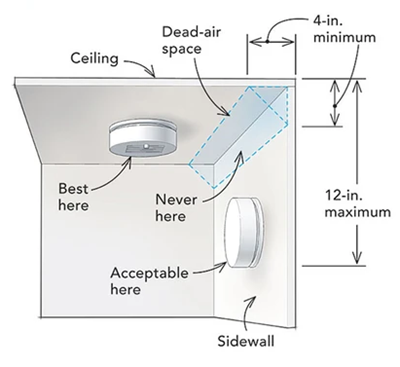
- When installing an alarm on the wall, the top edge of an alarm should be placed between 4 in. (100 mm) and 12 in. (300 mm) from the wall/ceiling line.
- When installing an alarm on the ceiling, place the alarm as close to the center as possible.
- In either case, install the alarm at least 4 in. (100 mm) from where the wall and ceiling meet.
- First Alert Smoke Alarm FAQs
- First Alert Carbon Monoxide Alarm FAQs
Connecting First Alert Hardwired Alarms to 120V Wiring
To begin, turn off power at the junction box and connect your alarm to the building's electrical wiring.
- Locate the junction box and turn off power
- Remove the power connector from the new alarm's packaging
- Using wire nuts, attach the hot (black), neutral (white), and interconnect (orange) wires
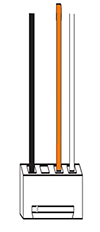
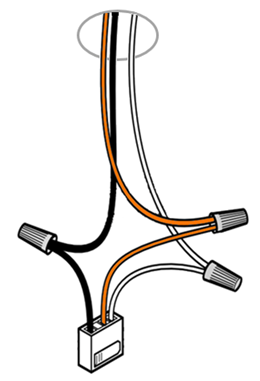
| Black wire (hot) |
Attach to black wire on power connector |
| White wire (neutral) |
Attach to white wire on power connector |
| Orange wire (interconnect) |
Standalone (single-station) alarm: This wire is not needed; tuck the orange wire into the junction box. Interconnected alarms:
|
Mounting First Alert Hardwired Alarms
- Secure the mounting bracket to the ceiling or wall using screws (included in the package)
- Insert the power connector into the plug on the back of your alarm
- Tuck any hanging wires into the junction box
- Position the base of the alarm onto the bracket and turn it clockwise until it's secured
- Remove the pull-tab to activate the backup battery
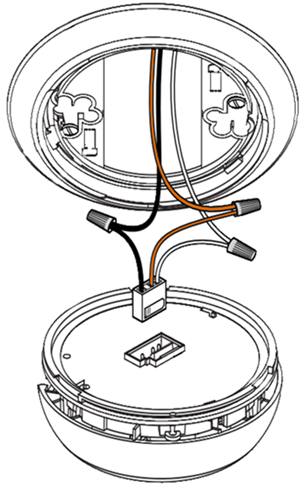
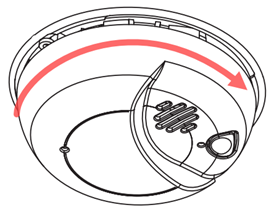
Installing Additional and/or Interconnecting First Alert Hardwired Alarms
If you are installing more smoke or carbon monoxide alarms, you'll want to repeat the process throughout the building. Interconnected smoke and co alarms must meet all requirements:
-
The same fuse or circuit breaker must power all interconnected alarms.
-
Up to 18 compatible detectors can interconnect, with a limit of 12 smoke alarms.
-
The total length of wire interconnecting the alarms should be less than 1,000 ft. (300 meters). This type of wire is commonly available at hardware and electrical supply stores.
-
All wiring must conform to all local electrical codes and NFPA 70 (NEC). Refer to NFPA 72, NFPA 101, and your local building code for more information.
-
Interconnect wiring diagram:
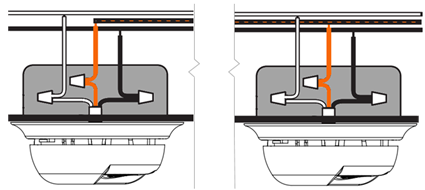
If you have any doubts or reservations about these interconnect requirements, please contact an experienced electrician to install your wiring and hardwired alarms.
Restoring Power and Testing Hardwired Alarms
Once you've installed your hardwired alarms, you'll want to restore power to the junction box. Under regular operation, the power indicator light on the alarm will shine/blink to indicate that it is receiving AC power.
Here's how you can test standalone or interconnected alarms:
-
Standalone Alarms: Press and hold the Test/Silence button until the unit triggers an alarm.
-
Interconnected Alarms: Press and hold the Test/Silence button until the first unit triggers an alarm. All interconnected detectors should sound off. Repeat this process to test each alarm in the interconnected series.
Other reasons include: It could be a different device or appliance such as a security system, monitor, carbon monoxide alarm, or other device which has a similar low battery or alert signal. Some of the same factors that cause unwanted alarms can cause intermittent alarms: dust and insects in the alarm or power interruptions in hardwired alarms. Improper wiring on AC or AC/DC smoke alarms. AC alarms will chirp every 5 seconds if the interconnect wire is grounded. The orange interconnect wire should NEVER be grounded; it should only be used to interconnect other smoke alarms or compatible devices.
- You may not be holding the test button down long enough. Try holding it down for up to 10 seconds (20 seconds on photoelectric models) .
- Your battery may not be installed properly or snapped all the way in place. Even if the alarm sounded briefly when the battery touched the terminals, you still need to make sure it is snapped securely in place. If the battery is loose, in cannot power the smoke alarm properly. After installing new batteries, be sure to test your smoke detector.
- Your AC power may not be on. AC and AC/DC units will have a power indicator light (red or green) that shines continuously when they are receiving electrical power.
- If you have a 10-Year model, the smoke alarm may not have been properly activated. If the tab broke away before the alarm was activated, you can use a toothpick to move the switch over to test the alarm.
- There may be insufficient battery power, try new batteries.
- Problems with voltage or insufficient electrical power (brown out) may cause a continuous weak sounding alarm. For AC or AC/DC models, temporarily disconnect power at the service panel until the brown out is over. If you do not restore the AC power, your smoke alarms cannot warn you of a fire.
- Incompatible warning device. If an incompatible alarm or auxiliary device is linked into a series of AC or AC/DC smoke alarms it may cause the system inadvertently go off.
- It is possible that your smoke alarm "silence" button was pushed by mistake. The alarm will now "chirp" once a minute for up to 15 minutes before resetting.
- Are you sure it's the smoke alarm? Funny to ask, but other devices have similar low battery chirps or warning tones.
- Your "new" batteries may not be fresh. If batteries are stored, especially in cold areas like refrigerators, they lose their charge more quickly. Always check the freshness date on the package when buying new batteries. Keep plenty of replacement batteries on hand so that you are sure to always be protected by your smoke alarms.
If it's time to replace your alarms, consider the NEW 10-Year Life series and never have to worry about a battery replacement for the life of the alarm.10-Year alarms are available in smoke, carbon monoxide and combination alarms.
- Power Source: Hardwired
- Battery Backup: Two AA
- Sensor: Photoelectric
- Wireless Interconnect: Can be linked with up to 18 units (12 Smoke, 6 CO/Heat/Relay)
- Smart Sensing Technology: Helps reduce nuisance alarms
- Noise Output: 85 dB in a T3 Pattern
- Single Button: One press to silence and test alarm
- Easy Installation: Universal mounting bracket and plug-in power connector for hassle-free installation
- Tamper Resistant: Includes Locking Pins, Theft-Prevention Lock
- Dust Cover: Keeps alarm clean during construction
- Improved UV Resistance: Keeps alarm from discoloring over time
- Standards: UL 217, FCC Compliant
- Eco-Friendly: Completely recyclable as an electronic device
- Warranty: 10 Year Limited
- Product Dimensions (LxWxH): 5 x 2 x 5.in.
- Product Weight: 1 lb.
- Smoke particles of varying number and size are produced in all fires. For maximum protection, use both ionization and photoelectric sensing technologies. Ionization alarms are generally more sensitive to fast flaming fires and photoelectric alarms are generally more sensitive to smoldering fires.
If you are interested in ordering a large quantity of items you may qualify for volume pricing discounts. Volume Discount Pricing is a great way for customers to save big on large, bulk orders of most items available in our store. Please send a bulk order request to our friendly sales staff so they may create a quote and provide personal service for your order! You will receive a response within 1-2 business days and our office hours are Monday through Friday, 8am-5pm CST.
- Let us know what products & the quantities you are interested in.
- Get a detailed quote from a dedicated sales rep.
- Our warehouse ships directly to you.
- You enjoy the savings & are now a preferred customer.
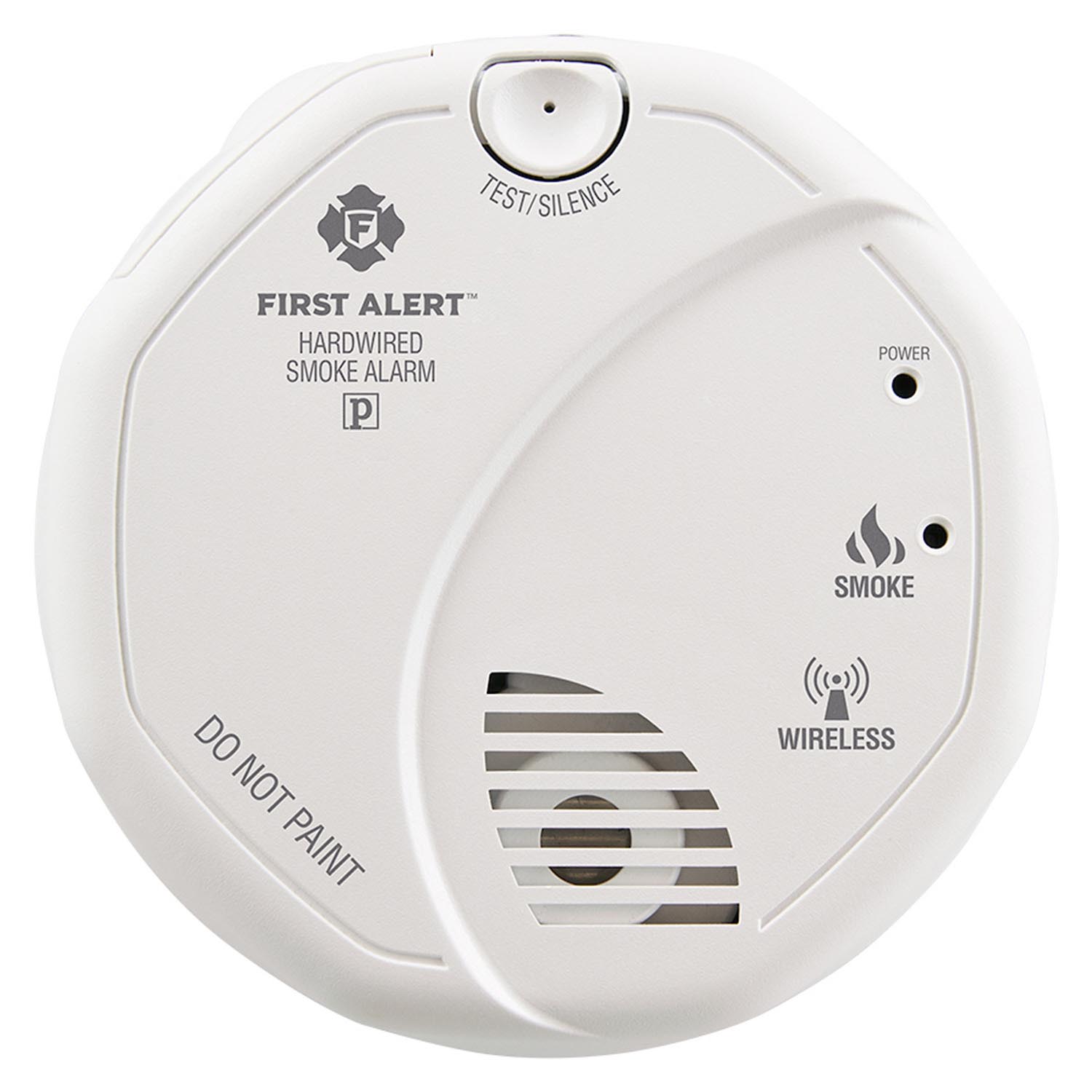
First Alert Wireless Interconnected Hardwired Smoke Alarm - SA521CN-3ST Reviews
Devices arrived promptly and in good order the day after they were ordered. Installation was easy using the web site and the included instructions. Thanks First Alert.
They work great easy set up only downside is that they are bulky seem huge
The product was put into operation this past weekend. The system puts together two separate buildings into one . A quick sinking with the help of a technician , was a breeze. Thank You ! Frank MCQUADE. a combo, a Smoke & CO system would be great
Works as advertised. Shipped as promised.
This item did what was expected. It allowed us to connect all of our wireless smoke and carbon monoxide detectors together.
Tested good. Synced to other smoke alarm.
It was easy to install since we had older BRK / First Alert units. Connected with the other units flawlessly.
This product installation is quick and easy. The set up is very labor efficient. This product is loud and will notify you immediately. This is a very good system and needs to be put out to people to let those know about it without alarm systems. Pricing is very reasonable.
I had old smoke alarms that I wanted to replace: 2 upstairs, 1 main floor and 1 in the basement. Three I replaced with combo smoke/CO2, the 2nd upstairs unit I purchased a bridge unit to connect the old hard wired to the 4 new battery units. The hardest part was the wired units because the old connectors didn't match any brand of new unit. The detectors came with easy directions and it wasn't that hard. Once set up, all work perfectly together. I like the voice indication, telling you where the fire or co2 issue is located. I am very pleased with the purchase and feel more comfortable with my expanded zone. No extra cost for wiring so although the units are a little more expensive it doesn't cost as much as an electrician!
Hardwired systems seamlessly integrated with the multiple First Alert wireless smoke alarms we installed. Now all alarms are integrated throughout our home. Awesome!

